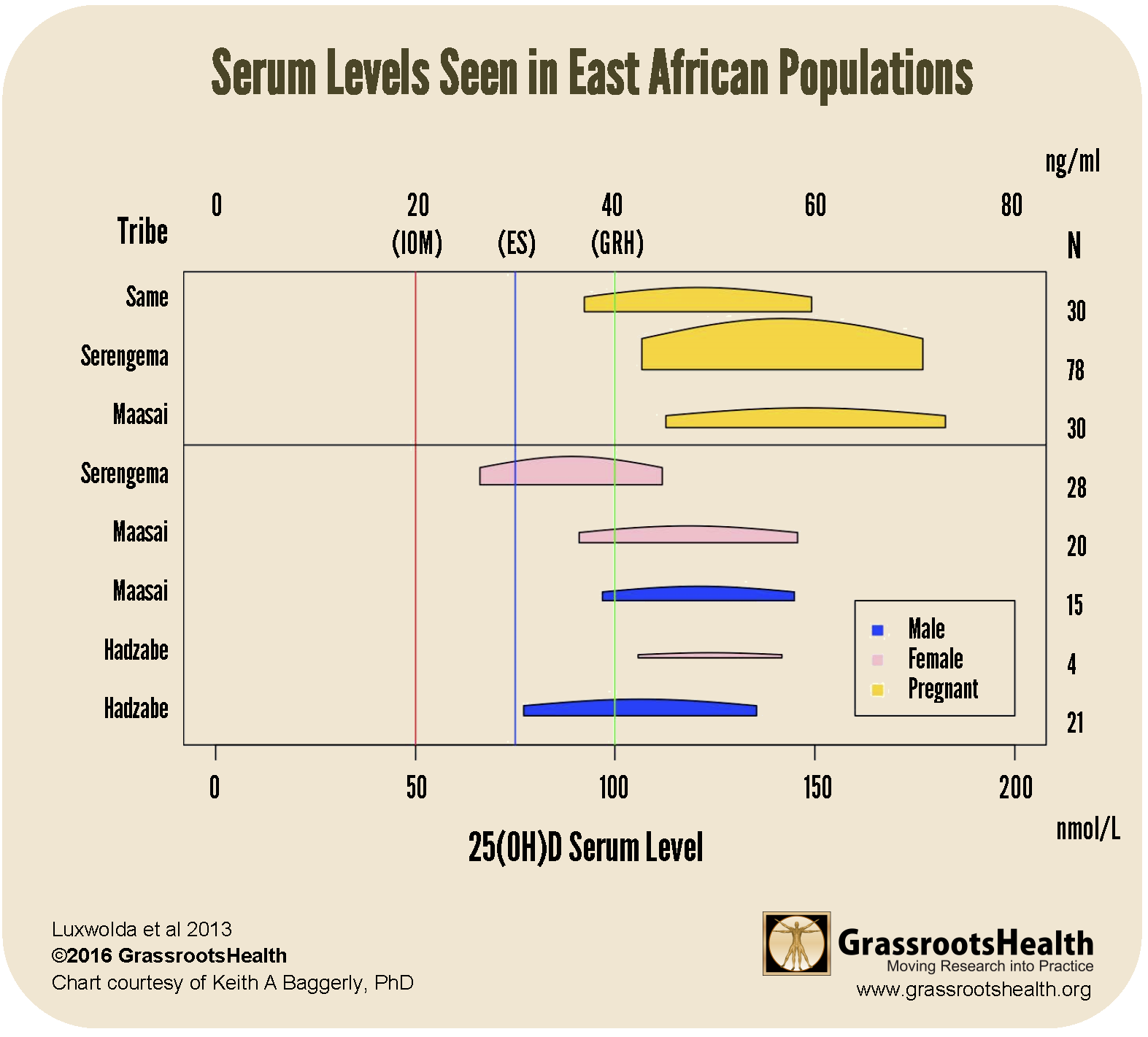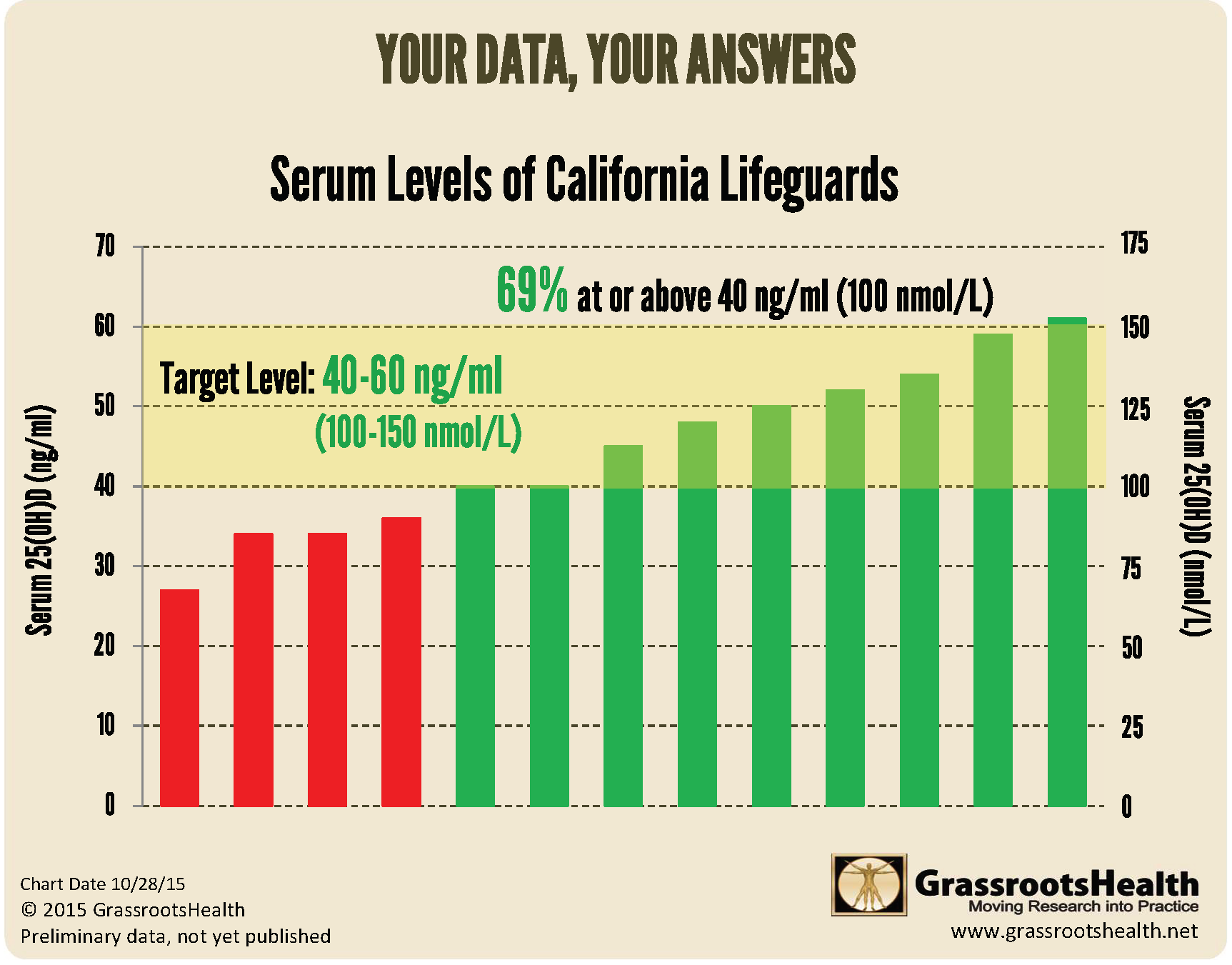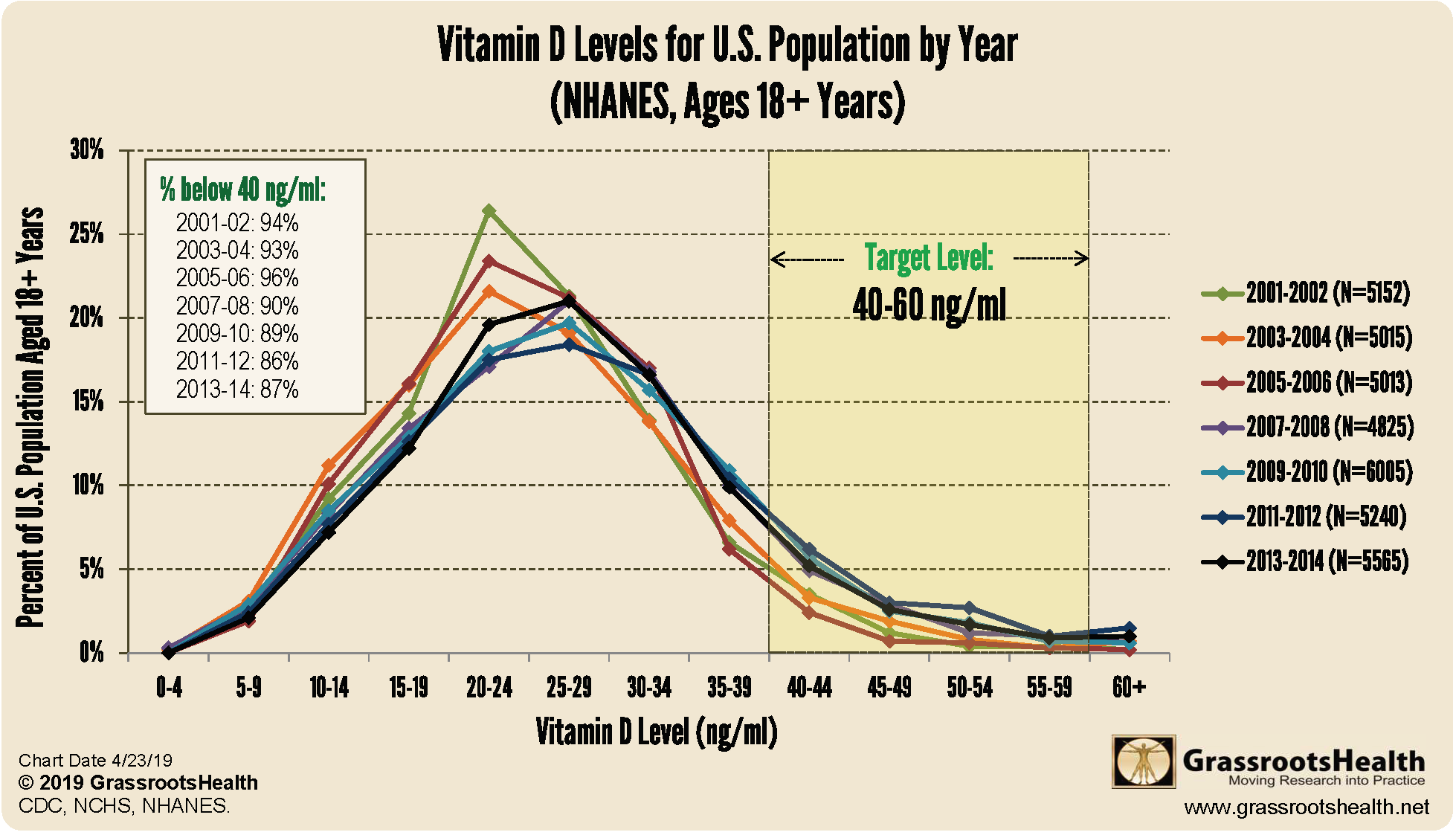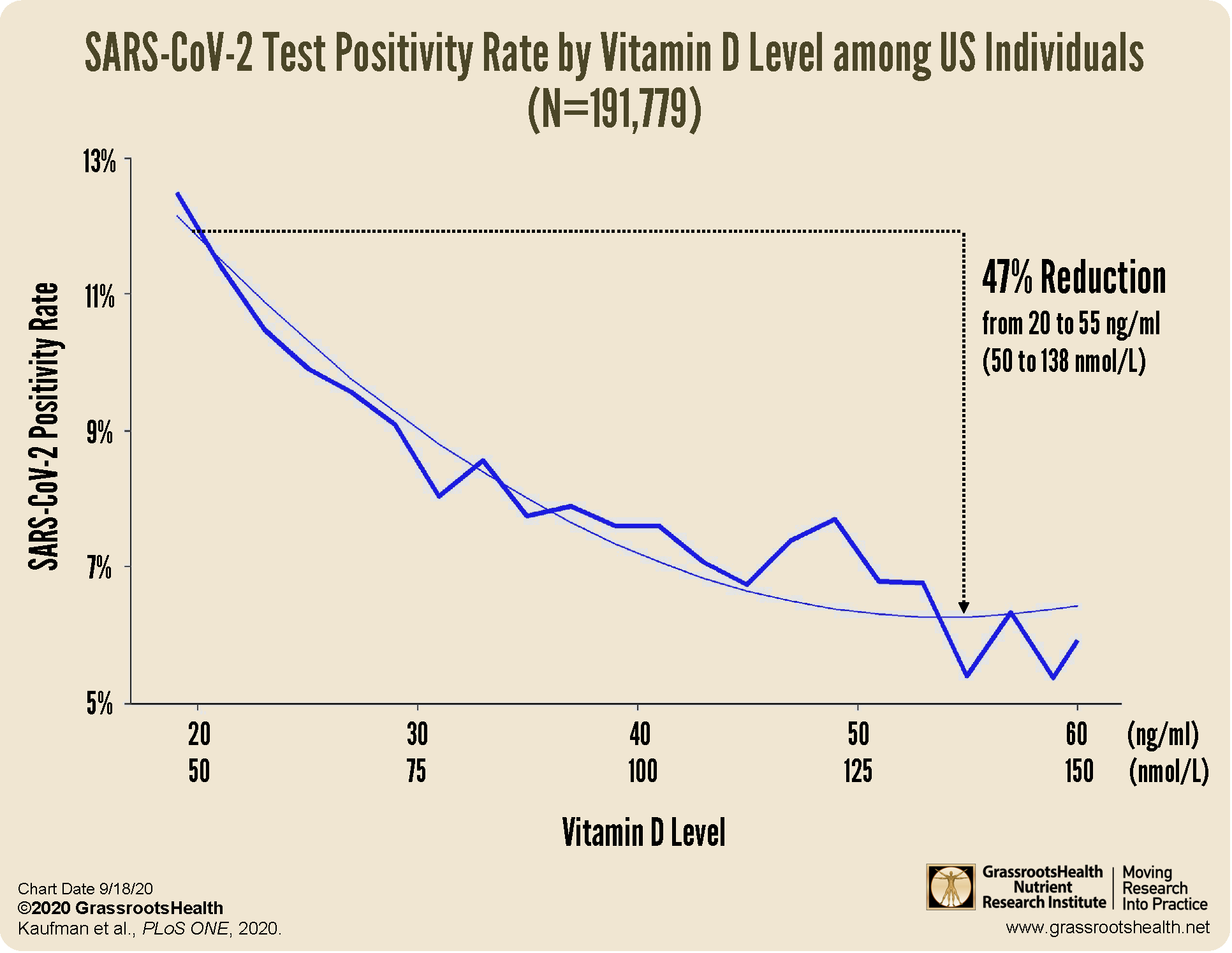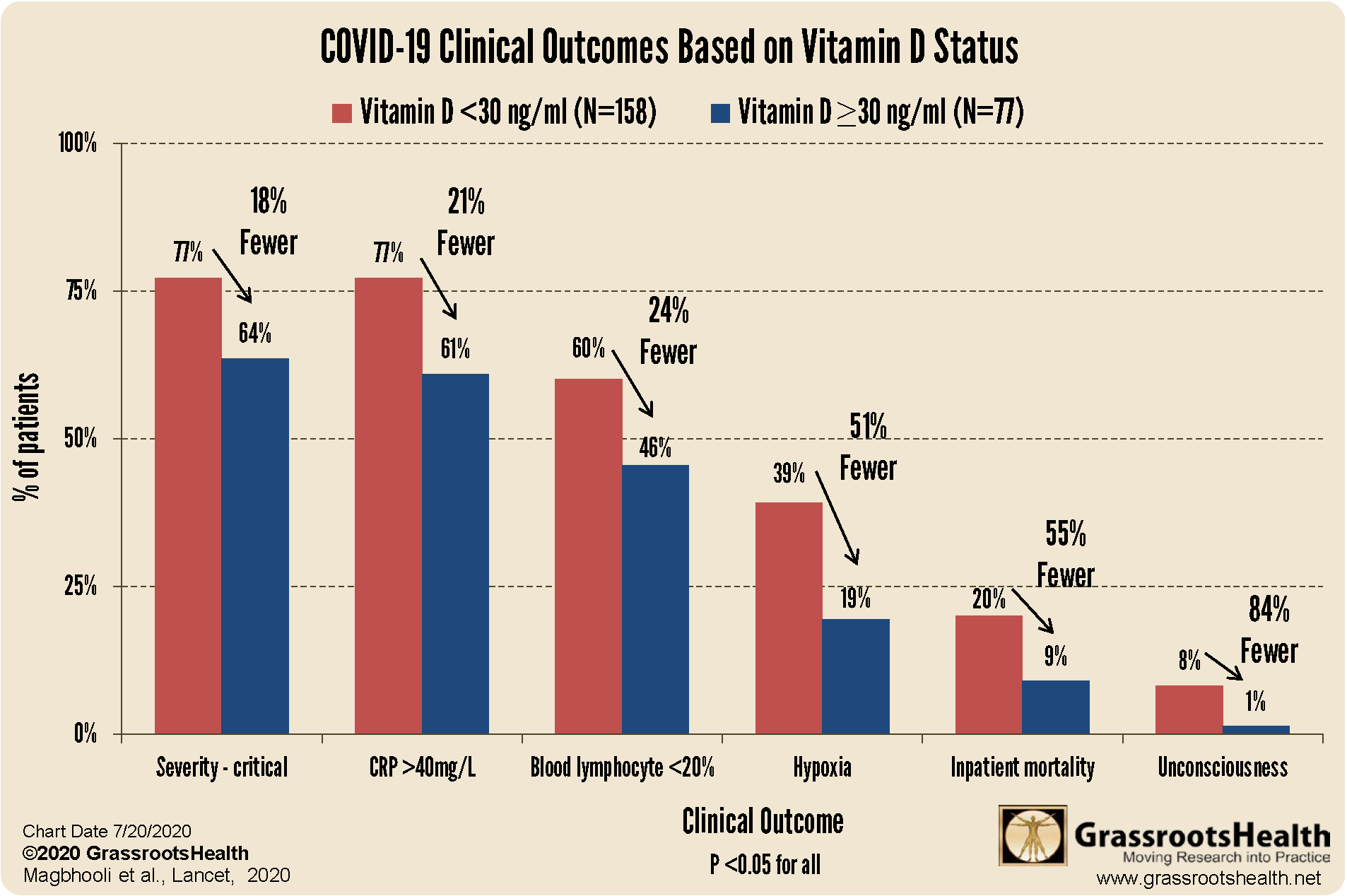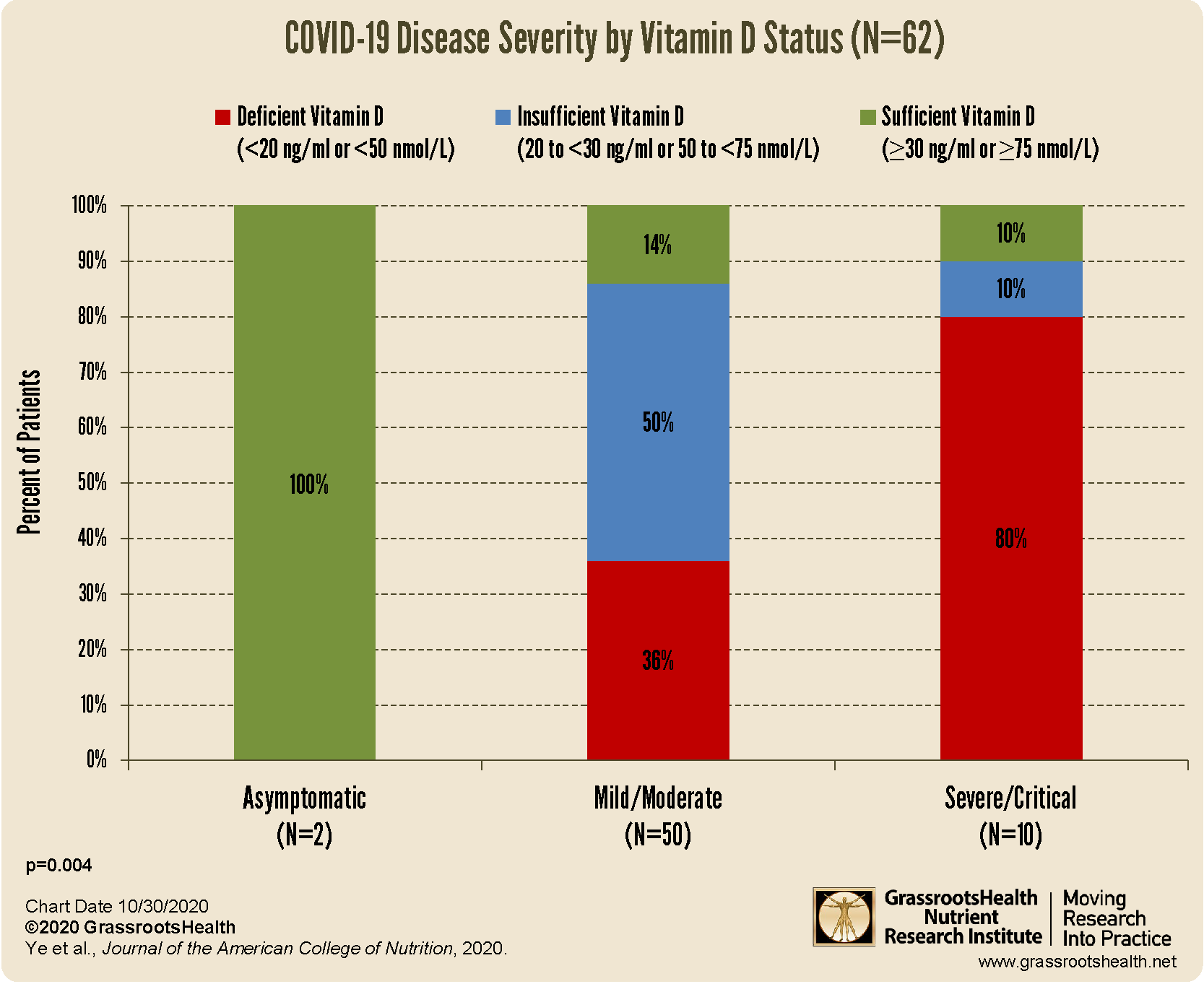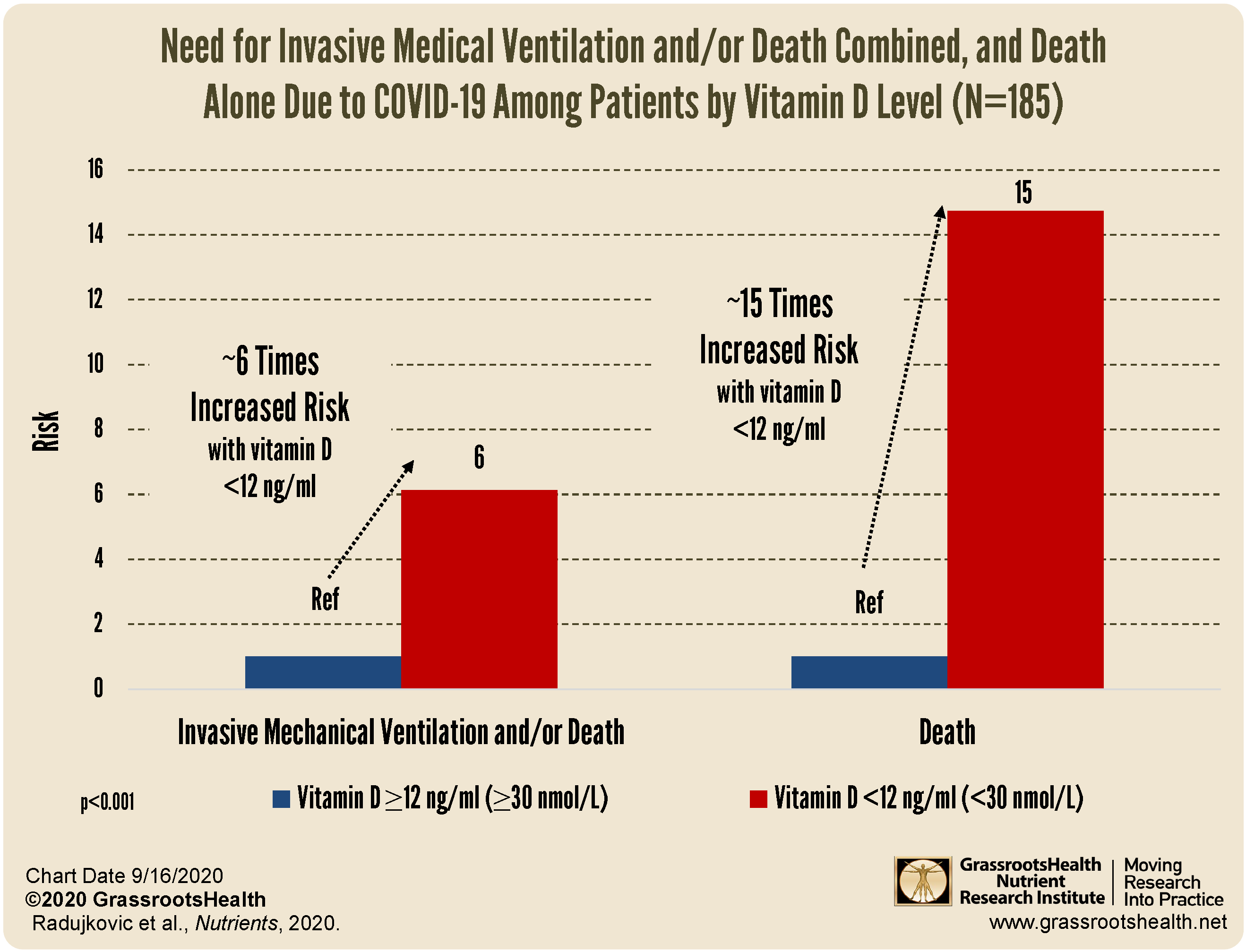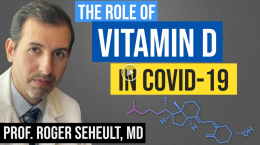Published on January 21, 2021
If given the chance, the body produces enough vitamin D from sunshine to reach levels of 40-60 ng/ml (100-150 nmol/L) – could the body be ‘wrong’?
 Centuries ago, Hippocrates (now considered the “Father of Medicine”) observed that the “sunnier side of the hill” was the healthier place to live. Because of this observation, he routinely prescribed sunbaths as part of his therapy for a wide variety of health ailments. While we now know that there are many benefits to proper sun exposure, the one with the greatest impact is most likely the production of vitamin D, and the reason it is dubbed the “sunshine vitamin.”
Centuries ago, Hippocrates (now considered the “Father of Medicine”) observed that the “sunnier side of the hill” was the healthier place to live. Because of this observation, he routinely prescribed sunbaths as part of his therapy for a wide variety of health ailments. While we now know that there are many benefits to proper sun exposure, the one with the greatest impact is most likely the production of vitamin D, and the reason it is dubbed the “sunshine vitamin.”
How Much Vitamin D Can the Body Produce From the Sun?
Our bodies naturally produce vitamin D from the sun under the right circumstances, such as the time of year or day, amount of clothing or sunscreen we are wearing, and other conditions that affect vitamin D production. Whether relying on the sun under these circumstances, or an ultraviolet lamp that produces UVB rays, the body is able to produce what is called an “erythema dose” of vitamin D – a term used by doctors to define the amount of ultraviolet radiation which results in a reddening of the skin. A minimal erythema dose is defined by a pinkness of the skin about 1-6 hours after sun exposure, going away within 24 hours. There is no single erythema dose or sun exposure time recommendation, due in part to differences in skin type and other individual differences in vitamin D production, but one minimal erythema dose is equivalent to roughly 10,000 – 25,000 IU of supplemental vitamin D! In other words, this is how much vitamin D your body is able to produce with a single ‘dose’ of healthy sunshine.
What are Vitamin D Levels among Groups with High Sun Exposure?
Based on evidence that humans originated in East Africa, Martine Luxwolda and Remko Kuipers, two Dutch researchers, assessed the vitamin D levels among 60 traditionally living Africans to determine the optimal vitamin D status from an evolutionary perspective. They found that the average vitamin D level from members of two ethnic groups was 46 ng/ml (115 nmol/L) and that 72% had levels of 40 ng/ml or higher. In a second study, these researchers assessed vitamin D levels among 449 traditionally living Africans from five ethnic groups. Similar to their first study, they found that the average vitamin D level was 43 ng/ml (107 nmol/L) in non-pregnant adults and 56 ng/ml (139 nmol/L) in pregnant women as shown in the chart below.
Click here for more information about these studies.
Additionally, GrassrootsHealth tested the vitamin D levels among a group of San Diego beach lifeguards at summer’s end. The average vitamin D level was 45 ng/ml, and as shown in the chart below, the majority of the lifeguards (69%) had vitamin D levels at or above 40 ng/ml. Since none of the lifeguards reported taking vitamin D supplements, observed vitamin D levels are primarily from sun exposure.
One of the initial goals of GrassrootsHealth was to determine a recommended range for a target vitamin D level that could achieve the best health outcomes for the majority of the population. The consensus reached was 40-60 ng/ml (100-150 nmol/L), and each and every one of our now 48 scientists on that panel agree that this level is not only safe, but also a desirable target for the benefit of multiple health outcomes, including prevention of cancer, heart disease and respiratory infections such as COVID-19.
Given that both a ‘natural’ and recommended range is 40-60 ng/ml, what are the vitamin D levels of the general population?
Using data from the National Health and Nutrition Examination Survey (NHANES), which collects health information from a representative sample of individuals living in the United States, the chart below presents the vitamin D levels for those aged 18 years and older by year (2001 to 2014). The average vitamin D level increased from 25 ng/ml in 2001-2002 to 28 ng/ml in 2013-2014 (62 to 69 nmol/L). The percent of adults below 20 ng/ml decreased from 26% to 23% during the same time period and those less than 40 ng/ml decreased from 94% to 87%. Even with these slight improvements, almost 90% of U.S. adults in the NHANES data set have a vitamin D level below the recommended range of 40-60 ng/ml!
Let’s All Reach Our ‘Natural’ Levels of Vitamin D!
As can be seen above, vitamin D deficiency is abundant – the good news is, it is easily corrected. While most of us cannot achieve a vitamin D level of 40-60 ng/ml (100-150 nmol/L) from sun alone, either due to our lifestyle, where we live, or other circumstances, we can certainly reach those levels with the right amount of supplementation.
Hippocrates also said “The greatest medicine of all is teaching people how not to need it” – so, how can you use the sunshine vitamin to benefit your health? What amount is right for you?
The only way to tell is to test your level of vitamin D – from there, use the vitamin D*calculator to help you determine a dose of vitamin D to achieve your desired target level, and choose either a regular daily maintenance dose (to reach your goal in approximately 3 months), or start with an initial “loading dose” to help bump it up more quickly (loading doses do not go above 25,000 IU per day, which is the amount our bodies can produce from proper sun exposure, and can help us reach our target level within only weeks).
Make Sure You are Getting Enough Vitamin D TODAY!
By joining the GrassrootsHealth projects, you are not only contributing valuable information to our study, but you are also gaining knowledge about how you could improve your own health through measuring and tracking your nutrient status, and educating yourself on how to improve it. Do you know what your status of vitamin D, omega-3s, and other essential nutrients is? Could your levels be improved? Test now to find out!
What does the Research Say about Vitamin D & COVID-19?
It’s TIME to start saving lives! If you can help PREVENT the majority of the death, it’s time! What’s it costing you/us not to take action NOW?
There is much published research that supports a clear link between vitamin D and COVID-19 showing that higher vitamin D levels are related to:
a decreased risk of testing positive for COVID-19
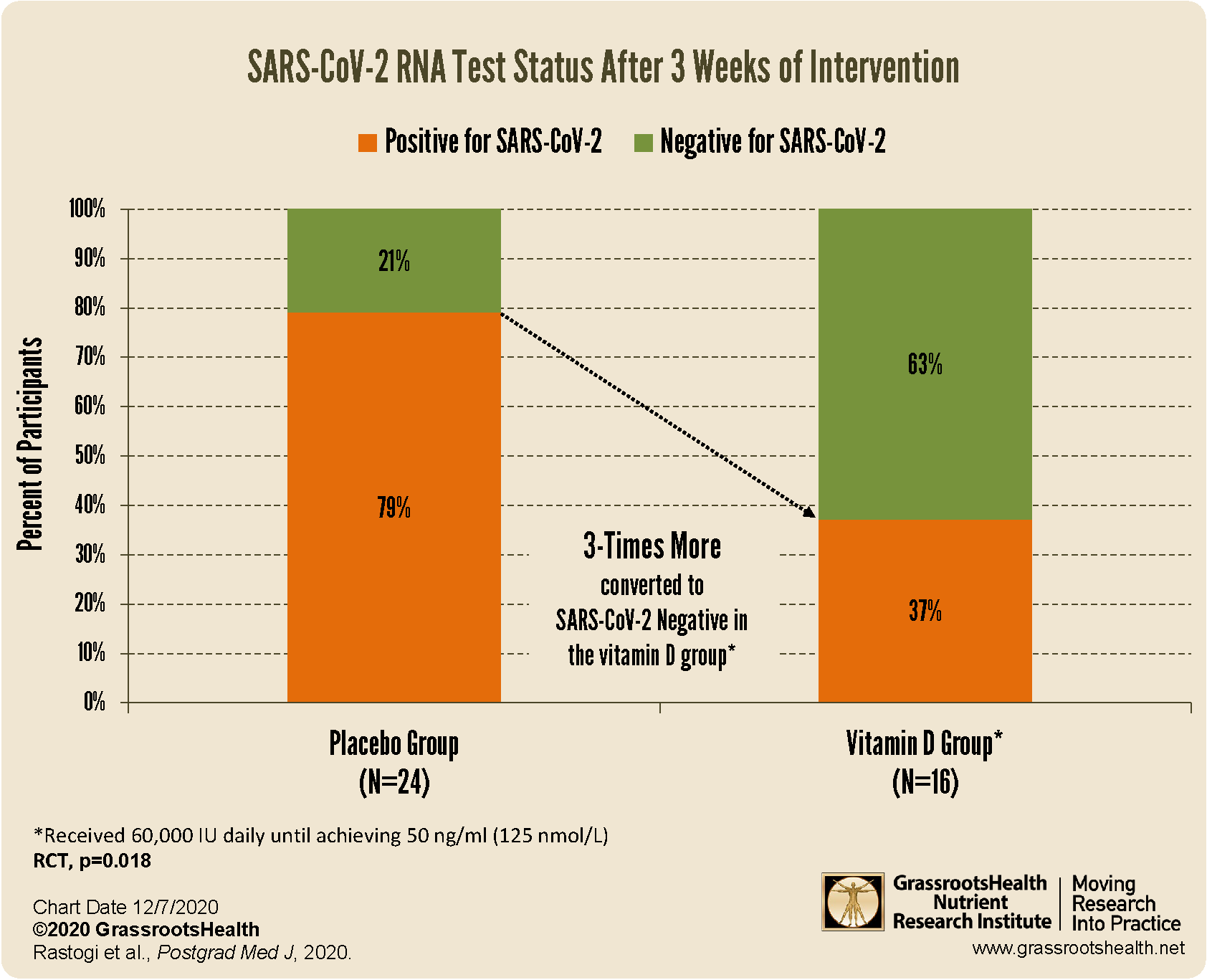 increased viral SARS-CoV-2 RNA clearance
increased viral SARS-CoV-2 RNA clearance
better clinical outcomes among patients with COVID-19
decreased risk of death due to COVID-19
Be sure to educate yourself on the benefits and importance of vitamin D for immune health, and take steps to ensure you and your loved ones are getting enough.
You can review all of the COVID-19 and immune health information we have shared on this page.


